- 1. Toltec Metaphysics
- 2. Carlos Castaneda
- 3. Florinda Donner-Grau
- 4. Taisha Abelar
- 5. Merilyn Tunneshende
- 6. Armando Torres
Toltec Metaphysics
In the 1960s and early 1970s, anthropologist Carlos Castaneda encountered an ancient Central American wisdom tradition that made modern civilization look like slavery. Its primary spokesperson, Juan Matus, drew an expanded map of human possibilities that were explored by ancient scientists for thousands of years and can still be explored today. The research tool is the human body. The experiments are simple. The directions are precise. The only question is: Will we try them?
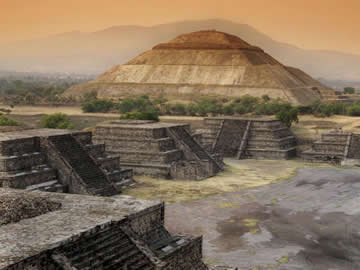
The Toltec metaphysical tradition cataloged by Castaneda is unique in being comprehensive and up to date. Unlike other religious traditions whose greatest practitioners lived thousands of years ago, Matus was still alive in 1973 and may have lived into the 1990s. He and other members of his group had powers equal to or greater than the greatest spiritual teachers of human history. In the books below, Matus explains and demonstrates how to achieve states of harmony, integration, and intentionality that unlock those powers in precise, practical, modern language that minimizes misinterpretation and wishful thinking.
Most members of Matus' group were female. This sets the Toltecs apart as a tradition where women and men share equally in leadership and the unique talents of all members are carefully developed. Reading between the lines, the group of seekers operates like an extended family group or clan that nurtures and empowers its members. It offers a model for renewing the human species, one small group at a time.
As a scientific, experiential tradition, it presents the findings of hundreds of generations of researchers. It is up to every new member of the tradition to verify the findings personally to claim the powers associated with expanded perception. There are no rules that guarantee success or absolute directions on what one should or should not do. Instead there are strategies that have been shown to work that one can adapt to ones own life to get positive results, achieve integrity, and expand personal sovereignty.
Castaneda was the primary author writing about the Toltecs, but not the only one. He was closely associated with two women authors of his own group, Florinda Donner-Grau and Taisha Abelar, and less closely with a third woman also instructed directly by Matus, Merilyn Tunneshende. Castaneda also advised a man, Armando Torres, who later served as a bridge to another Toltec lineage, where his instruction was completed. None of these people is known to be alive and offering the teachings. All that is left is their writings.
Castaneda produced eleven books (and one compendium), Donner-Grau produced three books, Abelar two, Tunneshende three, and Torres three. The books are highly readable and immersive first-person accounts of interactions in a wider-than-usual reality. They introduce an entirely different map of possibilities than the one we usually assume. That map is more precise, practical, and consistent than ones we learn in many institutional settings and includes useful strategies for navigating its features.
Only two of Castaneda's books—the first two—include psychedelic experiences. Castaneda's interest in plant medicines led him to Matus, but what Matus had to teach him was nearly all practical and sober. Grau's early life experiences with South American shamen and healers (who did use plants, including tobacco) also led her to Matus. Once she met him, she entered expanded states of consciousness merely by being in his presence. This was true of all the authors. The teachings are means of achieving states of being that affect other people and the events in which we are participating. Those states might be called "the aboriginal dreamtime". The books describe how to enter it and what we can do in it.
These twenty-two books comprise thousands of pages. Knowing what they contain allows strategic motion through them. Comments about the authors and titles follow.
Carlos Castaneda
Castaneda's books are all fascinating. He carefully presents new information, concepts, and contextual information that the reader may need to understand what is happening. In all the books, the reader can start from zero, with no preparation. Some of the other books in the Neo-Toltec canon, by the other authors, are not freestanding in this way.
These are books of learning. As we read them we learn a new, broader, more complex, more precise map of reality and how to use it. Castaneda is extremely consistent and helpful in asking his teacher questions we might want to ask if we were in similar situations. Matus answers him with peerless intelligence and wisdom, humor, and practicality. In the interaction between these men we get a fully functional paleo master schooling a civilized, highly educated, sincerely interested fool, both laughing at him and nurturing him with incredible patience, care, and empathy.
Castaneda is precise in his descriptions and honest about his experience. His precision and honesty make him trustworthy. He is such an accurate and meticulous reporter that early critics of his work could only say "that's impossible!" They could not criticize his reporting, detail, or organization, which were excellent. Because he is so honest, even about his own foibles, feelings, and failures, at times he comes across as an idiot or a pain in the neck.
Take that in. We are precisely that ugly and annoying as civilized morons. His frustrations are our frustrations. His challenges are our challenges. That's why he is such a great reporter: He is going through what we will go through and asks the questions we would ask.
The books are listed here in order of publication.
The Teachings of Don Juan: A Yaqui Way of Knowledge: In 1960, Castaneda goes out into Indian Country hoping to learn about medicinal plants and find an informant for his anthropological work. He meets an old man who fascinates him and begins teaching him an ancient knowledge. Because Castaneda is interested in psychedelics this first book includes mostly his experience with them under Matus' guidance. It does not include most of the practical, abstract teachings that he receives at the same time. If you are into trippy stuff, this is a fine place to start. If you are looking for more practical information on how to restructure your life around paleo wisdom, skip to the third book.
A Separate Reality: As Castaneda continues using power plants and spends more time with his teacher, he experiences barely imaginable things and begins to realize that he needs to change to access this broader reality soberly and successfully. This book begins to reveal the teaching methods used with him. The writing is beautiful and the scenes poignant. This book drives home how broken we are as civilized people and how primitive people build bridges to worlds of wonder and meaning by living intentionally and strategically.
Journey to Ixtlan: This book summarizes the first eight years of Castaneda's apprenticeship, using important scenes left out of the first two books. With excellent organization, it leads to his graduation from normal reality. It is incredibly readable, rich, and useful. To understand the basic strategies for regaining paleo consciousness, start here.
Tales of Power: The second period of Castaneda's apprenticeship, roughly 1968 to 1974, is covered here. It presents the duoverse, the two sides of our being, and how to use them practically; including how to navigate expanded states of consciousness and the powers they unlock. It is incredibly funny and profound. It ends in Castenada's second, final graduation, and Juan Matus' exit from his life. An important book to read; reading Journey to Ixtlan first might be helpful.
The Second Ring of Power: Castaneda called this "the book that should never have been written", because his publisher required one on short notice. It deals mostly with his experiences with other apprentices struggling to integrate different levels of awareness. Highly helpful if one is in a similar position, but probably not the one to start with.
The Eagle's Gift: After performing an inconceivable act, Castaneda reenters his life with a full reset. He begins to realize that there are two sides to his being, two tracks of experience in him that do not overlap, and that he was instucted on both tracks. He interacts with other apprentices of his teacher who are also putting their lives back together and trying to regain traction and momentum. Some of the details here are very useful, especially the late chapter, "Florinda", on the art of stalking, one of two central consciousness practices. In general this is a book for those who have read the others, done the practices, and are integrating awareness.
The Fire From Within: After regaining both sides of his memory, Castaneda composes this careful description of Toltec reality and its major features and concepts. It clears up many of our illusions about god, heaven, purgatory, and hell, from the practical perspective of people who observed them without morally loaded preconceptions, and who had the opportunity to experience them in great depth. This could be an excellent first book and is an important one.
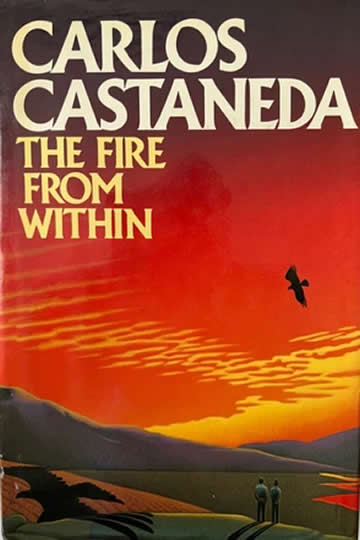
The Power of Silence: Wonderful tales from his lineage and his teacher's life put Castaneda's journey of learning in perspective as part of a consistent tradition. This book is focused on the Toltec equivalent of God, an all-powerful, intelligent, organizing force, how it communicates with us, and how to cooperate and unify with it in our daily lives. This could also be an excellent first book and is an important one.
The Art of Dreaming: One of the two major consciousness practices taught to Castaneda, the art of dreaming, is discussed in depth here. It also covers the top tier predators on our planet, how they operate, and the traps they lay for us (hint: they are not human). If one is a talented dreamer, this might be a practical starting point. Otherwise, this might be an item on the dessert tray after reading the main dishes.
The Magical Passes: Near the end of his life, Castaneda taught physical movements that serve metaphysical purposes. He received some from his teacher, modified them, and expanded them into series. If one understands the traps discussed in The Art of Dreaming, these appear to be modern traps based on ancient ones: The movements produce power without understanding or sobriety. They are sometimes called "tensegrity". While they work at accumulating energy, they do not deal with egotism and the problems associated with it. Adding fuel to that fire creates bigger problems. For some they can be a path to energetic integrity that allows forward motion. For others they perpetuate patterns of avoidance.
The Wheel of Time: This is just a collection of quotes from the other books. Skip it.
The Active Side of Infinity: The true finale and synthesis, this book ties together the others and personalizes them with stories from Castaneda's normal life. It is a capstone that makes plain that we are participating in a fabric of events infused with consciousness and purpose. It also describes how the top tier predators are operating here and why human beings behave so stupidly: We are mind-controlled. Understanding how we are deliberately diminished can help us resist and overcome that abuse.

Florinda Donner-Grau
The books by Donner-Grau, Abelar, and Tunneshende may offer more access to the teachings to some women. They are, each in its own way, devastatingly to the point, but may not be accessible to men or to women successful at imitating men and playing by male rules.
Donner-Grau's Being In-Dreaming shows what it is like to shift between layers of consciousness through dreaming and dreaming awake and what happens to us when we do. It also includes interactions with the members of the party of seekers, and with Castaneda before his second graduation, that are delicious and imprint the magic of the tradition. Highly recommended.
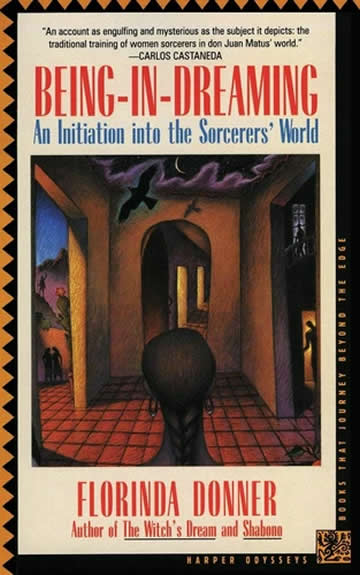
Donner-Grau's The Witch's Dream: Has a rough start and relies on the reader's familiarity with experiences fleshed out in Being In-Dreaming, but successfully conveys how medicine people live in parallel realities, upholding different dreams for themselves while living in the house next door. Shabono is full of flavor, describing the author's experiences with a South American spiritual group she first encountered as a child. Both books are clearly in her voice and may catch you in their spell. For the right person they might open windows a magical reality. They are not about the specific tradition the rest of these books describe, but do describe transcendental practices.
Taisha Abelar
Abelar's The Sorceror's Crossing deals with a stalker's training using traditional methods. Stalkers tend to be rugged people geared for the wear and tear of human interactions. The daily world is their battleground and hunting ground. For those with this constitution, start here, and read the "Florinda" chapter of The Eagle's Gift.
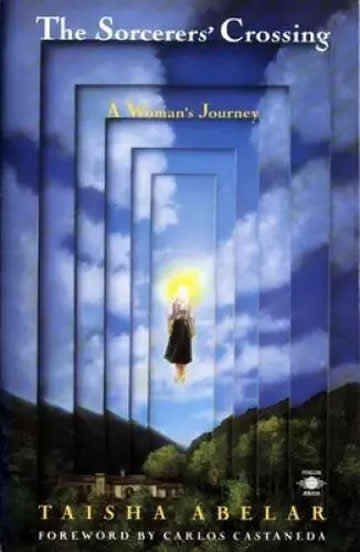
Abelar, like Donner-Grau, interacts with the older members of the party of seekers and gives wonderful sips of their flavor. As a lonely young woman, she is supported by magical characters who infiltrate her frustrating and desolate life. By playfully, fiercely, and lovingly interacting with her, they make her aware that a different reality is available and reinforce her courage to claim it.
Abelar's Stalking With The Double is an unpublished but downloadable treasure. It elaborates on her stalkers training and shows other stalkers in action: other members of the party of seekers and how they deal with her. Important to read? Read her other book first, for sure, as it sets this one up. Find tips for living in impermanence and timelessness strategically and tie-ins to Taoism. For those who have read all the other books and put the concepts into practice, this may be the crowning jewel.
Merilyn Tunneshende
Like the other two women, Tunneshende began publishing in the 1990s. She was not acknowledged by Castaneda's Clear Green group (that handled his seminars and included Donner-Grau and Abelar) and had to change Castaneda's name in her books to avoid legal strife. Yet, she clearly interacted with the others, knew Castaneda, and at one point occupied and taught students in "the house of the witches" where the other women were trained and Juan Matus and his associates lived. She too learned with Juan Matus directly, with his compatriot Genaro Flores, and with his apprentice Soledad.
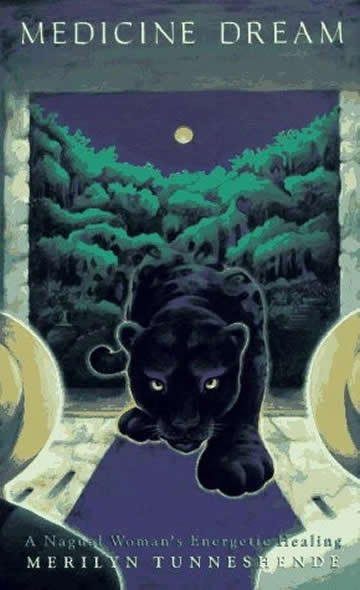
Her books deal with bridging: using dreaming to recognize resources then finding them in waking reality. They include practical exercises. For those with a specific kind of imagination they could open new worlds: Medicine Dream, Don Juan and the Art of Sexual Energy, Twilight Language of the Nagual.
Armando Torres
Torres met Castaneda in the early 1980s and had significant interactions with him. His first book, Encounters with the Nagual, shows Castaneda in action once he had become a wise man. Torres' struggle to implement the teachings and Castaneda's advice to him can be revealing and useful to those in a similar struggle.
Through Castaneda, Torres was put in touch with another Toltec lineage that guided his metamorphosis. His reporting on that lineage in The Secret of the Plumed Serpent and The Universal Spider Web is useful contrast and context. That group, while Toltec, from the same ancient roots, was focused on healing. Its day-to-day customs and methods are instructive.
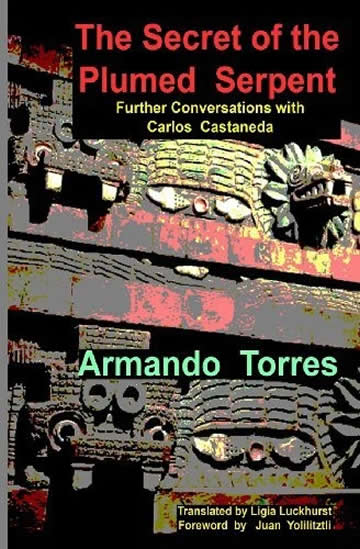
Torres answers many questions raised by Castaneda's experiences and shows how indigenous magicians and seekers of various kinds survived the European conquest. The Secret of the Plumed Serpent has a secret backdoor to Taoism and Chinese Dragons: what they really are and how people become them. The final book, The Universal Spider Web, has detailed information about the top tier predators that run our lives that complements Castaneda's in The Active Side of Infinity.
Torres' books are probably most appropriate for those who have already read Castaneda's, who want cross-referencing from a fully down-to-earth sister lineage. They also contain details about Castaneda's later life that reconcile his successes and failures. Torres' teachers are, like Juan Matus, magical people, both severe and silly, unbelievably competent and delightfully human. Long labors of consciousness bear fruit for Armando, and his vulnerable honesty makes profound insights into our own workings accessible.
